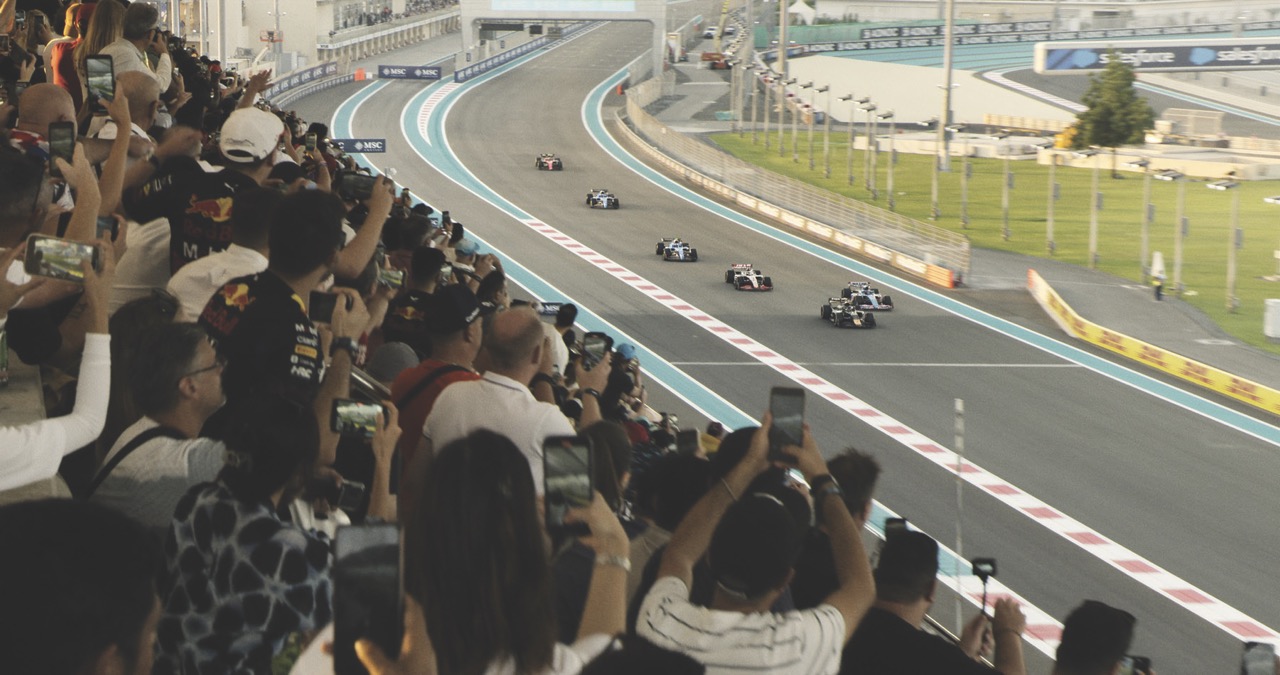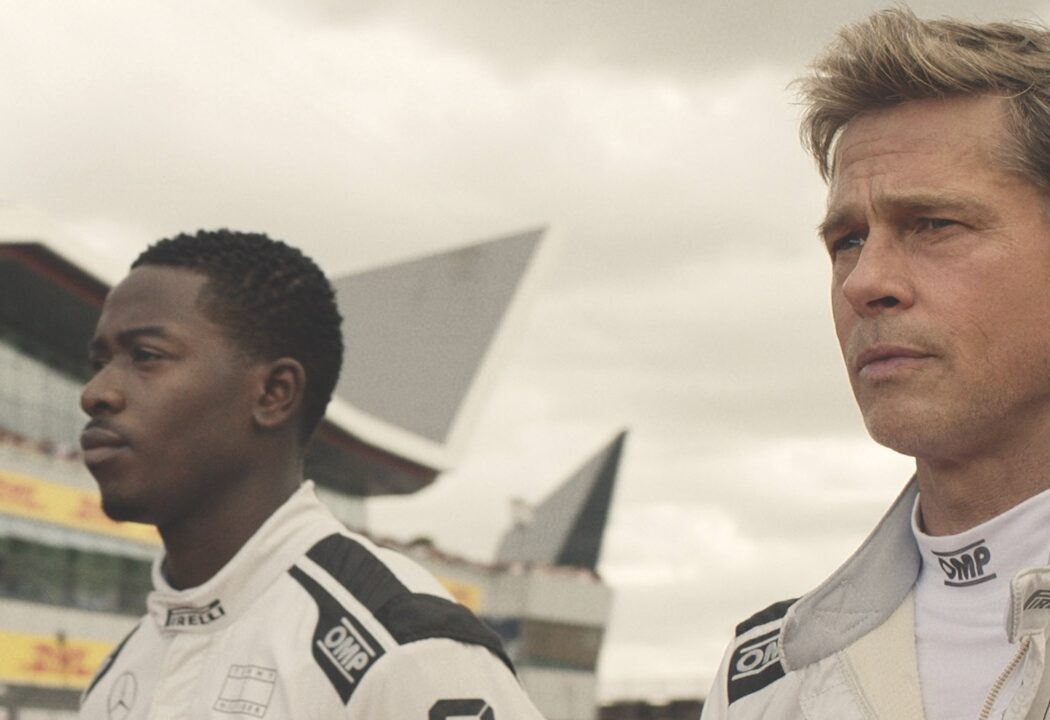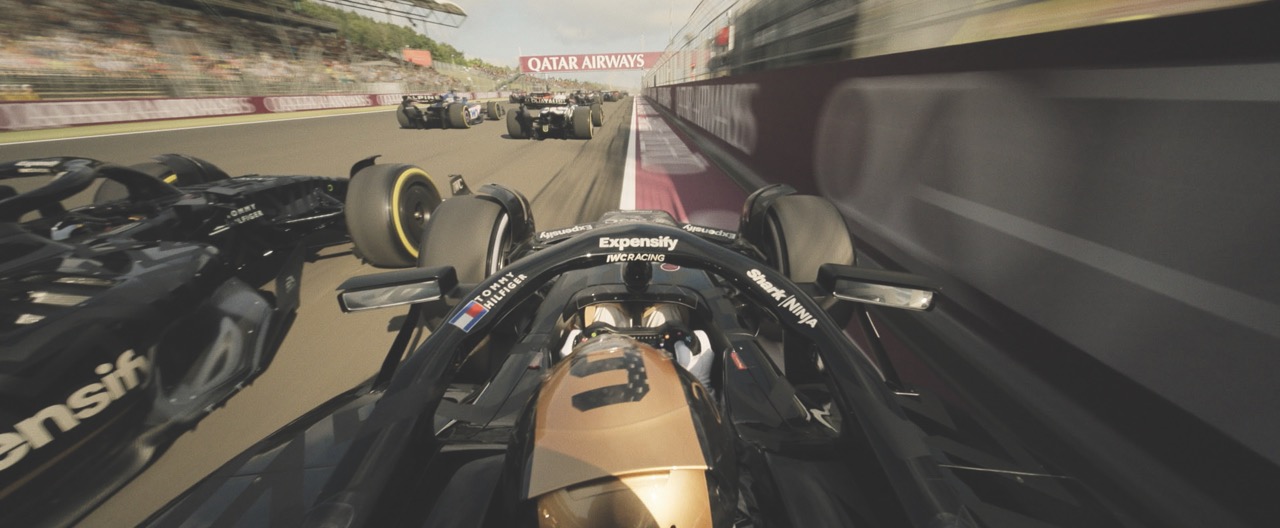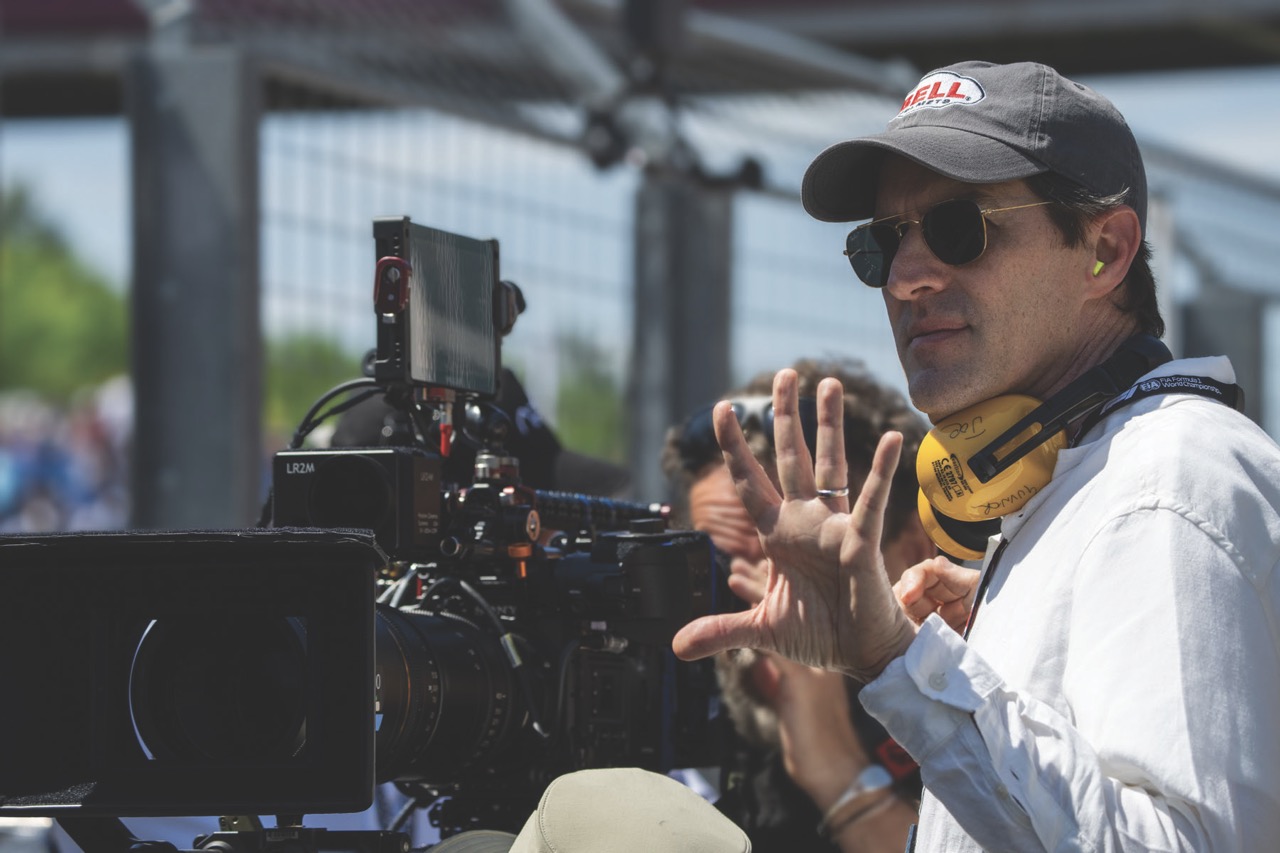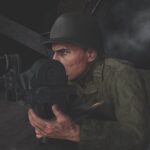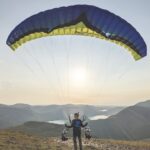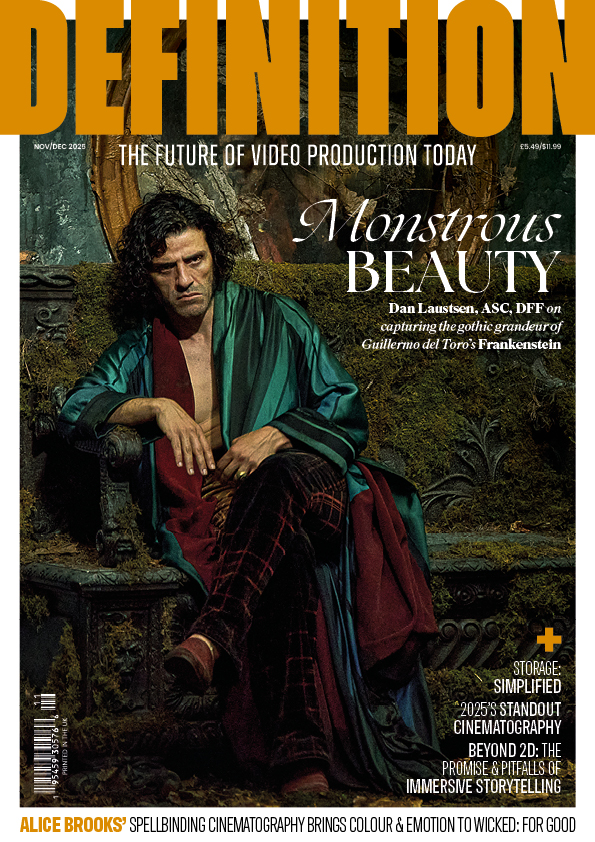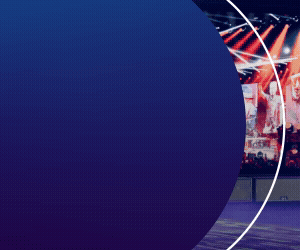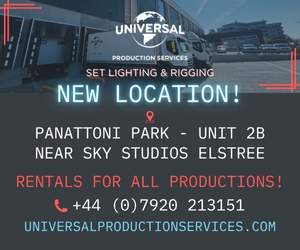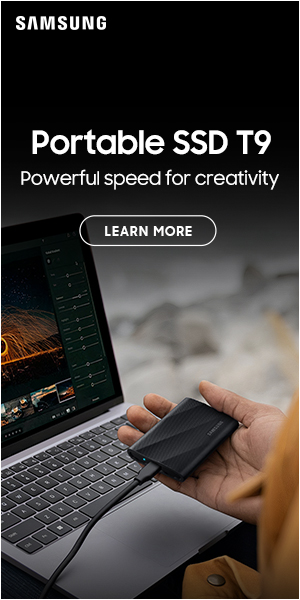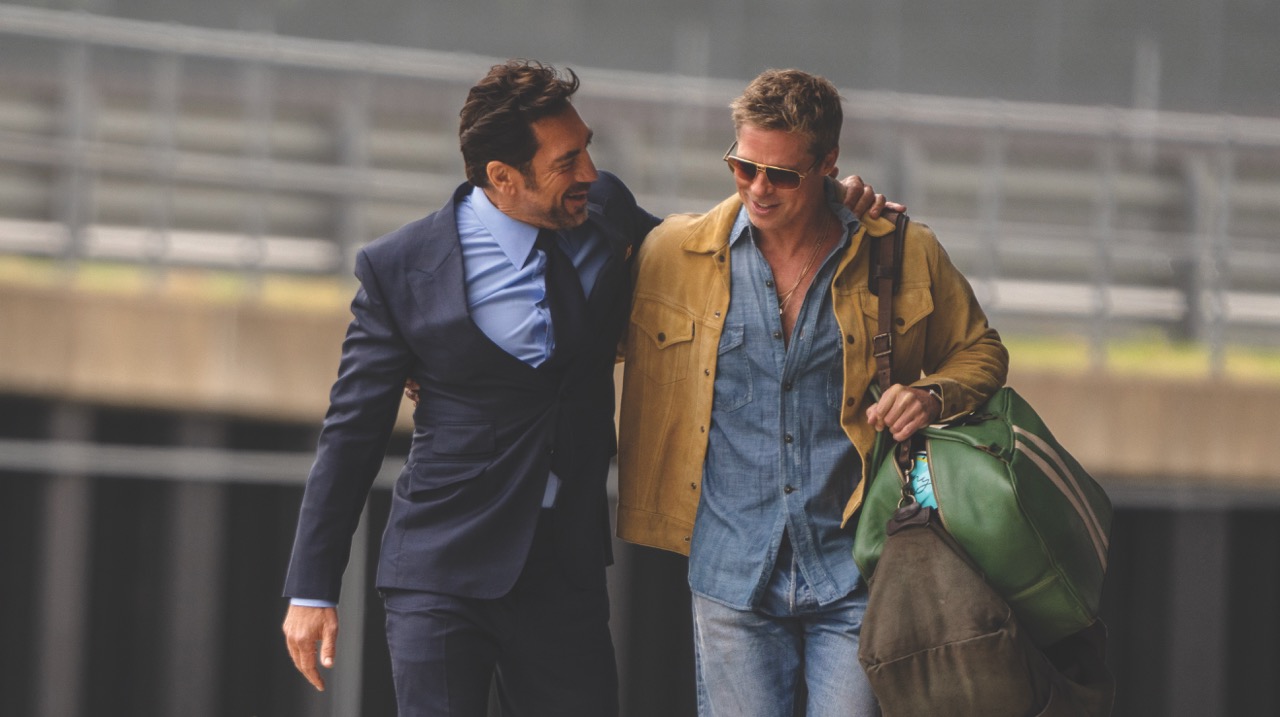
Production: F1
Posted on Aug 7, 2025 by Admin
“We couldn’t have cheated any speed tricks to make this movie”
Claudio Miranda, ASC slams on the throttle with some high-octane camerawork in F1
Words Oliver Webb | Images Apple TV+
F1 follows Sonny Hayes (Brad Pitt), one of Formula 1’s most promising drivers in the nineties, until a near-fatal accident shatters his career. Thirty years later, Sonny steps out of retirement to return to racing with Team Apex. He is partnered alongside the team’s hotshot rookie (Damson Idris) and soon realises that he can’t take the road to redemption on his own. Directed by Joseph Kosinski, the film was captured by longtime collaborator Claudio Miranda, ASC.
Miranda has shot all of Kosinski’s feature films, beginning with Tron: Legacy in 2010. “I’m always around Joe and we often talk about what would be a great technology for the next movie,” he begins. “Before F1, we discussed how to make Top Gun: Maverick better and we’re always trying to think how we can make the film. What I love about Joe is that we’re both very similar. We both prefer natural and believe that real is best; everything is sort of secondary from there. We try to aim for reality. I think people somewhat sense it. A lot of people are talking about using AI, but it takes you away from the immersion of the story.”
At the races
When it came to the look of F1, Miranda and Kosinski wanted to capture the authentic elements of F1 races. “We were really at the races when shooting this,” he says. “Between qualifying times, pre-qualifying times or any little slot that they would give us during the real race. There would be five- to ten-, even 15-minute windows that we were getting. We’d have scenes prepped, then we’d go out there and the cars would run. I think it feels like a visceral movie.”
Miranda relied on a selection of Master Prime lenses, Fuji zooms, Voigtländers, ZEISS Loxias and Sony G Series E-mounts to capture the film. “We didn’t want to go into a synthetic world,” explains Miranda. “The studio was originally looking at volumes to start shooting the film, but that was never our approach, even though it might have been other people’s perceived approach. There was concern about how to get actors really going at the speeds that they go. I felt that there’s just no way to get the actors going around 180-plus miles an hour. Joe and I were watching some films together and we both loved Grand Prix. That was a great reference of shots, and there was a panning angle that we were attracted to. So, we wanted to attempt a more modern take on that as well.”
Miranda knew the cameras had to be small for this project and worked with Sony to devise one-off cameras specifically for the film. “They were prototypes of what we called Carmens – these little sensors on a stick,” he adds. “The whole camera system had to fit inside an elongated F2 body that Mercedes made for us. That was a lot of work, and we also had Panavision building these panel mounts. So, there was Sony developing new gear, and then Greg ‘Noodles’ Johnson with RF Films, who made all the telemetry on the track work as well.”
Pole position
Miranda faced similar logistical challenges while figuring out how to capture cockpit shots in Top Gun: Maverick. “For Top Gun, we had six cameras in the cockpit: four on the actor and then two that were kind of overs to the pilot wearing the same helmet. That was also our pathology when it came to F1 that we didn’t really change. We were able to do a good variety of moves. They had to be approved by Mercedes and also Graham Kelly, our car fabricator. He was in charge of building all the cars that Mercedes gave them, all the parts too and safety heading. Everything was planned three months ahead. I had CAD models from Mercedes, and all the mounts were stuck in certain places.”
Due to Miranda’s background as a gaffer, he finds it hard to let go when it comes to lighting. “I’m very much in charge of lighting,” he admits. “However, I do love input from gaffers. There was a gaffer I really loved – he was one of my best collaborators; his name was Erik Messerschmidt. He then got an offer to start shooting for Venture and I told him that he had to go and do it. I’m very much a technical gaffer and always involved with 3D, the design of shots and camera design. I like my own way of exploring sets. It’s for myself, but also if you have to sell producers on a certain shot, it just helps me show them what I want to do and it all makes sense. Everyone’s on board.”
Lighting choices were often out of production’s control due to filming across numerous actual live races. “As cinematographers, we always like late light, but that goes all out the window on a project like this. You just start with the races; some of it is high noon – which is not always the best – but I would choose that over some virtual reality room at perfect sunset all the time, as I prefer the reality over artificial.
“Abu Dhabi was an interesting one, moving from an hour before sunset into twilight and then full night. It was a challenge both in terms of lighting and schedule. I wasn’t putting bounce cards out or chasing highlights – it was more about just getting light on the actors and hoping the camera had enough range. There were moments of perfect timing, like when Brad would turn a corner and a sliver of sunlight would shine through, for example.”
Need for speed
Brad Pitt and Damson Idris did all their own driving for the film. “Brad was going over 180 miles per hour,” reveals Miranda. “He was great. In normal moviemaking, we have things called biscuit rigs. It’s like a self-driving trailer. And as you can imagine, no matter what kind of VA engine they put into it, it’s still going to be a quarter of the speed of what an actual car will do. I was watching other racing movies and I could see that the exteriors look fast, but when you get inside the cockpit, it all of a sudden feels slow. The thing about F1 cars is they have a great view of the outside world. It’s a very driver-exposed sport, meaning we couldn’t have cheated any speed tricks to make this movie. Brad and Damson trained for months, from regular cars to F2 cars. The shoot lasted a couple of years, and the actors’ strike delayed us. Because of that, we missed part of the racing season and had to wait for the following year to go back and reshoot Abu Dhabi, Monza and all those scenes with Brad.”
Miranda and his team often found themselves shooting from the sidelines and the pits, which meant they weren’t able to do a lot of Steadicam work. “Any of the walking, or when we’re with the crowd, we’re shooting on DJI Ronin 4Ds,” he continues. “We used those mostly for the whole opening of Daytona. We needed a small camera that could be steady, fluid and nimble – one that wouldn’t be too big. The whole point of this movie was to stay small. I really liked the problem-solving element of the whole job.”
Miranda concludes: “I love working with Sony too; they were up for it. It took almost six months from conception to actually having a camera in my hand. That’s amazing speed to build a camera and an extraordinary feat.”
Scanning in the fast lane
From ground-based LiDAR to high-flying drones, Clear Angle Studios captured every curve and corner of F1’s iconic tracks for the film’s VFX teams
Clear Angle Studios was tasked with capturing 3D scans of several F1 circuits featured in the film. It used a combination of ground-based LiDAR scanning and aerial photogrammetry to ensure every track was scanned with precision. “Each morning, we’d lay out physical markers around the circuit, which allowed us to align the data from both the LiDAR and drone scans,” explains drone pilot Marco Lee. “By blending these datasets, we produced a cohesive 3D model for each track. These scans were then delivered to the VFX teams in order to accurately replicate the real-world tracks in a digital environment.”
Yas Marina Circuit stood out as the most challenging environment to capture, especially as the scan was conducted during the Grand Prix. “Due to event restrictions, we weren’t allowed to use the drones, so we needed to wait until the race was over and then work through the night with ground-based LiDAR scanners,” says Lee. “When we returned months later to complete the aerial photogrammetry, we faced strict flight height restrictions, which meant we had to carefully navigate around large lighting towers to get the coverage needed. It was a real test of skill for the team, but we stayed agile to produce a high-quality scan of an iconic track.”
As someone who’s into cars and a F1 fan, being part of the project was an incredible experience for Lee. “Getting to step onto the actual tracks was surreal,” he shares. “Being there during the Grand Prix added another level, seeing the teams, their cars and the entire atmosphere up close was something I’ll never forget. The APXGP car looked incredible, and the shots they were capturing were on another level. The crew was great to work with, professional, welcoming and clearly passionate. It made the whole experience not just technically rewarding, but genuinely fun to be part of.”
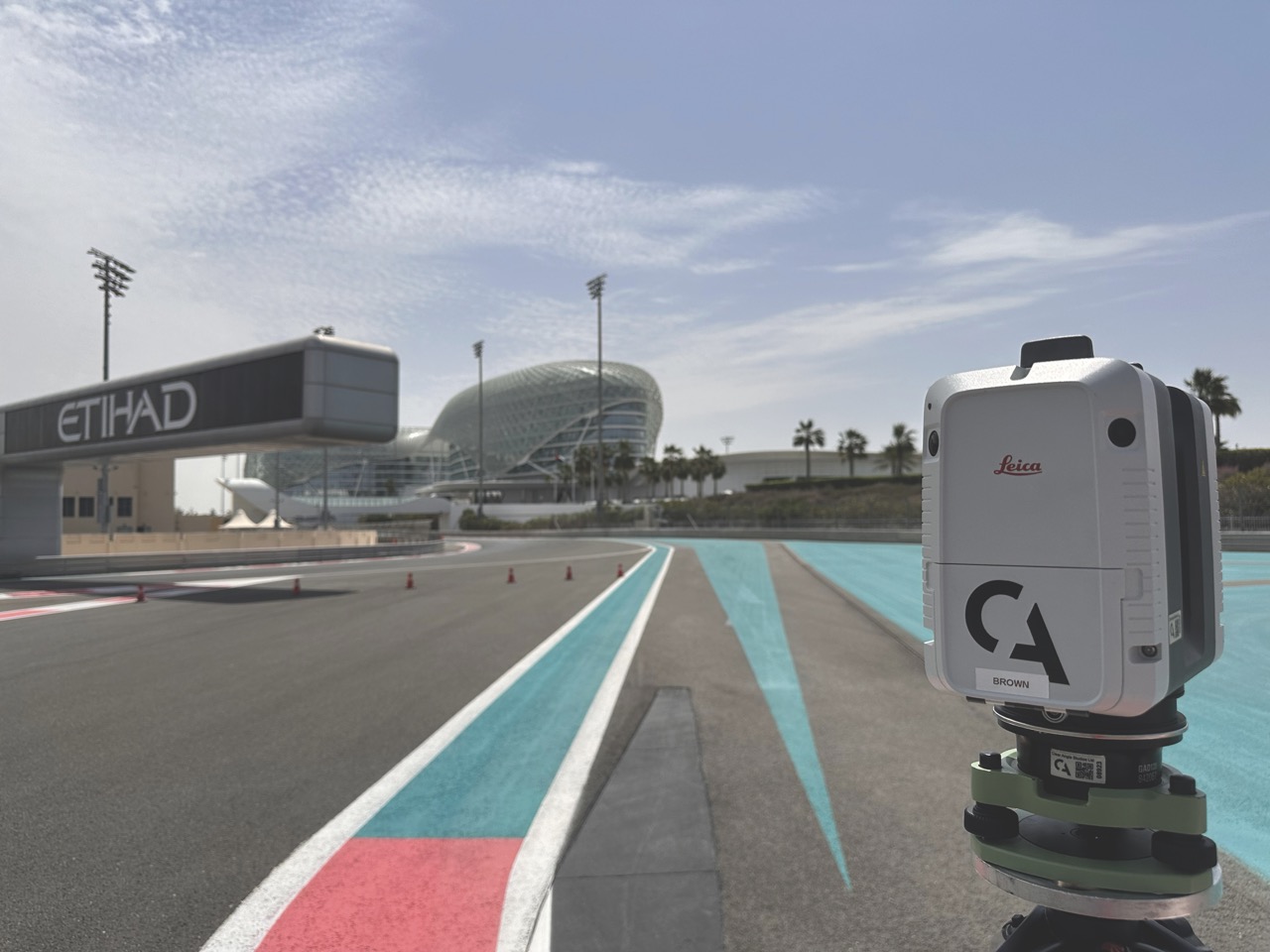
This story appears in the July/August 2025 issue of Definition


